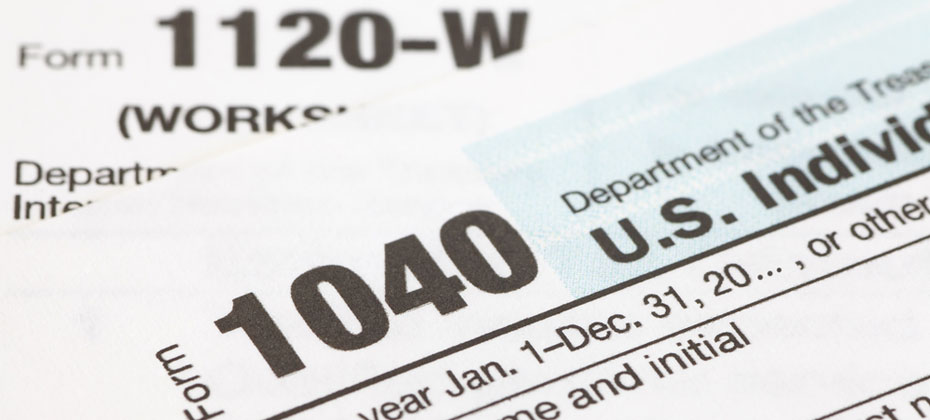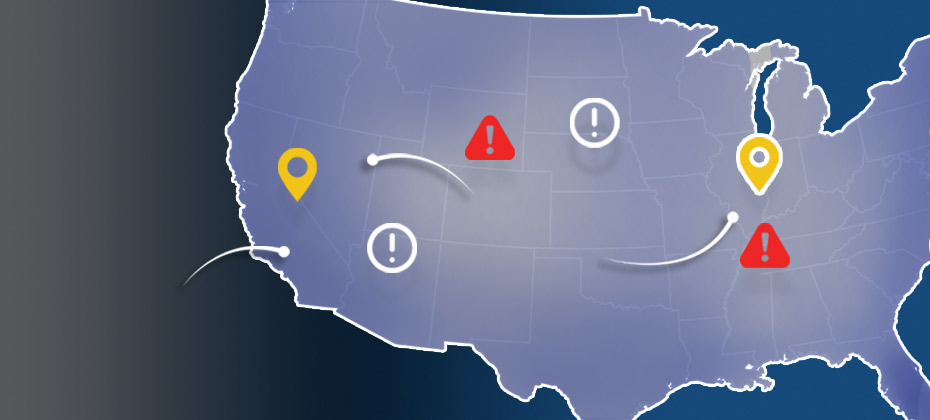Industries

In recent years, leasing has strongly returned as an option for consumers to choose when looking to get into a new vehicle and maintain an affordable monthly payment. Experian Automotive’s latest infographic examines the lift in leasing, as well as key attributes in the auto finance market. Click here to download the PDF.

Identity management traditionally has been made up of creating rigid verification processes that are applied to any access scenario. But the market is evolving and requiring an enhanced Identity Relationship Management strategy and framework. Simply knowing who a person is at one point in time is not enough. The need exists to identify risks associated with the entire identity profile, including devices, and the context in which consumers interact with businesses, as well as to manage those risks throughout the consumer journey. The reasoning for this evolution in identity management is threefold: size and scope, flexible credentialing and adaptable verification. First, deploying a heavy identity and credentialing process across all access scenarios is unnecessarily costly for an organization. While stringent verification is necessary to protect highly sensitive information, it may not be cost-effective to protect less-valuable data with the same means. A user shouldn’t have to go through an extensive and, in some cases, invasive form of identity verification just to access basic information. Second, high-friction verification processes can impede users from accessing services. Consumers do not want to consistently answer multiple, intrusive questions in order to access basic information. Similarly, asking for personal information that already may have been compromised elsewhere limits the effectiveness of the process and the perceived strength in the protection. Finally, an inflexible verification process for all users will detract from a successful customer relationship. It is imperative to evolve your security interactions as confidence and routines are built. Otherwise, you risk severing trust and making your organization appear detached from consumer needs and preferences. This can be used across all types of organizations — from government agencies and online retailers to financial institutions. Identity Relationship Management has three unique functions delivered across the Customer Life Cycle: Identity proofing Authentication Identity management Join me at Vision 2016 for a deeper analysis of Identity Relationship Management and how clients can benefit from these new capabilities to manage risk throughout the Customer Life Cycle. I look forward to seeing you there!

It’s the “Battle of the Sexes” credit edition. Who sports higher scores, less debt and more on-time payments? According to Experian’s latest analysis, women take the credit title. Thank you very much. The report analyzed multiple categories including credit scores, average debt, number of open credit cards, utilization ratios, mortgage amounts and mortgage delinquencies of men and women in the United States. Results revealed: Women’s average credit score of 675 compared to men’s score of 670 Women have 3.7 percent less average debt than men Women have 23.5 percent more open credit cards Women and men have the same revolving utilization ratio of 29.9 percent Women’s average mortgage loan amount is 7.9 percent less than men’s Women have a lower incidence of late mortgage payments by 8.1 percent “There were several gaps between men and women in this study, including the five-point credit score lead that the women hold,” said Michele Raneri, Experian’s Vice President of Analytics and New Business Development. “Even with more credit cards, women have fewer overall debts and are managing to pay those debts on time.” The report also takes a look at the vehicle preferences of men and women and how those choices play into their overall credit and financial health. Below are the top-line results: Women were more likely to purchase a more functional, utilitarian vehicle, while men tended to lean toward sports cars and trucks The top three vehicle segments men purchased in 2015 were mid-size pickup trucks, large pickup trucks and standard specialty cars. In fact, they were 1.37 times more likely to purchase a mid-sized pickup truck than the general population The top three vehicle segments for women were small crossover-utility vehicles, mid-size sports-utility vehicles and compact crossover-utility vehicles. Women were 1.40 times more likely to purchase the small crossover-utility vehicle than the general population Experian conducted a similar study, comparing men and women on various credit attributes in 2013. At that time, women also scored higher than men in the credit score category - holding steady with a 675 VantageScore® credit score compared to the men’s 674 VantageScore® credit score, but the gap has widened, with the men’s score further lowering to 670. While men’s scores have dropped since 2013, the overall financial health for both sexes is strong. Most notably, the mortgage 60-plus delinquency rate has dropped significantly. In the 2013 pull, men were tracking at 5.7 percent and women were 5.3 percent. Today, those numbers have dropped to .86 percent for men and .79 percent for women. What a difference a few years has made in regards to the recovering housing market. Time will tell if the country’s state of credit will continue to trend higher, as indicated in the 2015 annual report, or if the buzz of potential recession and an election year will reverse the positive trend. As for now, the women once again claim bragging rights as it pertains to credit. Analysis methodology The analysis is based on a statistically relevant, sampling of depersonalized data of Experian’s consumer credit database from December 2015. Gender information was obtained from Experian Marketing Services.

Proven identity and device authentication to minimize identity tax return fraud Identity fraud places an enormous burden on its victims and presents a challenge to businesses, organizations and government agencies, including the IRS and all state revenue authorities. Tax return fraud occurs when an attacker uses a consumer’s stolen Social Security number and other personal information to file a tax return, often claiming a significant refund. The IRS is challenged by innovative fraudsters continually trying to outsmart its current risk strategies around prevention, detection, recovery and victim assistance. And with the ever-increasing number of identity data compromised and tax return fraud victims, it’s necessary to question whether tax preparation companies are doing all they can to keep personally identifiable information (PII) secure and screen for fraud before forms are submitted. “ID theft isn’t just credit card fraud,” said Rod Griffin, Director of Public Education for Experian. A recent Experian online survey indicated that nearly 76 percent of consumers are familiar with ID theft and tax fraud — up significantly from the past two years. And 28 percent of those surveyed have been a victim or know a victim of tax fraud. To protect all parties’ interests, tax preparation agencies are challenged by today’s savvy fraudsters who have reaped the benefits of recent breaches. In order to protect consumers, organizations need to apply comprehensive, data-driven intelligence to help thwart identity fraud and the use of stolen identity data via fraudulent returns. The key to securing transactions, reducing friction and providing a consistently satisfying customer experience, online and offline, is authenticating consumers in a clear and frictionless environment. As a result, it’s necessary to have reliable customer intelligence based on both high-quality contextual identity and device attributes alongside other authentication performance data. Comprehensive customer intelligence means having a holistic, bound-together view of devices and identities that equips companies and agencies with the tools to balance cost and risk without increasing transactional friction. Businesses and agencies must not rely on a singular point of customer intelligence gathering and decisioning, but must move to more complex device identification and out-of-wallet verification procedures. Effective solutions typically involve a layered approach with several of the following: Identity transaction link analysis and risk attribute derivation Device intelligence and risk assessment Credit and noncredit data and risk attributes Multifactor authentication, using one-time passcodes via SMS messaging Identity risk scores Dynamic knowledge-based authentication questions Traditional PII validation and verification Biometrics and remote document verification Out-of-band alerts, communications and confirmations Contextual account, transaction and channel purview Additionally, government agencies must adhere to recognized standards, such as those prescribed by the National Institute of Standards and Technology to establish compliance. The persistent threat of tax fraud highlights the urgent need for businesses and agencies to continue educating consumers and more importantly, to improve the strategic effectiveness of their current solutions processes. Learn more about Experian Fraud and Identity Solutions, including government-specific treatments, and how the most effective fraud prevention and identity authentication strategy leverages multiple detection capabilities to highlight attackers while enabling a seamless, positive experience for legitimate consumers.

It’s hard to remember a world without online lenders. Today, fintech players continue to pop up, making it easier to cross-shop loans and land instant approvals. Gone are the days of lengthy applications and waiting to hear if you’ve scored the latest credit line or personal loan. Consumers, especially with top-tier credit, can easily seek lower monthly payments or consolidate another loan with a cash-out option. Whatever the need, there’s a lender ready to serve. Strike that. There’s actually two or three lenders waiting to serve you. In fact, a recent Experian data pull revealed an increasing share of personal loan balances is actually going to lenders outside of the traditional banks and credit union space (they still own the lion’s share of the business). In 2013 (Q4), these more non-traditional lenders had 15.36 percent of personal loan balances. In Q4 of 2015, that number increased to 27.26 percent. The personal loan business today is just over $222.9 billion in outstanding balances. As the competition heats up, lenders will need to diversify, stand out and provide more value to consumers. Those that engage with new, value-added services, and deliver timely, personalized needs-based messages will capture the greatest share of the market. Here is a sampling of ways to draw consumers in and deliver the value they seek in a financial institution: Be Transparent Lending Club, one of the original peer-to-peer lenders and currently the biggest in terms of dollars funded, continues to grow by providing consumers and investors with transparency, good loan terms and speed. Prosper, on the other hand, recently acquired an app that allows their customers to track spending, budget and monitor their credit. They plan to leverage this technology in the near future and offer it to customers and investors for free. Research reveals Millennials especially are looking to tech and free services to manage their personal finances. A recent Experian survey focused on Millennials and credit revealed 48 percent have used free financial services, like Mint, to manage their finances. Additionally, 57 percent use on average three financial apps. Know Your Customers Payoff uses survey data to segment their customers into roughly 10 financial personalities based on how they use and think about their debt. These personality types are used to tailor marketing messages and customer service conversations about how to improve their financial situation. Their site features a quiz, Discover the Secrets of Your Financial Personality, helping consumers and Payoff understand more about trends attached to spending, saving and managing money. Offer Solutions for Debt Consolidation Even after consumers consolidate debt and pay it off successfully, unforeseen expenses, unexpected life events, evolving spending habits and the increasing cost-of-living expenses mean there will always be a market for debt consolidation solutions. Understanding consolidation credit account behavior is mandatory for lenders looking to stand out and stay ahead of the consolidation needs of consumers. Having visibility to consumers’ interest rates, revolving loan balances and the remaining months on existing loans provides unique ways to segment and engage clients with need-based offers. Consumer-tailored messages during the prospecting, acquisition and account management stages of the relationship sets the stage for repeat business. The research is clear. Individuals are willing to switch brands if they feel a different provider will better meet their needs. Lenders – in both the traditional and fintech spaces – should not expect many chances when it comes to getting it right with consumers. Fail to keep them engaged and you’ll fail to keep them. Period. Learn more about identifying profitable consolidation candidates, check out Experian’s annual Vision Conference in May.

2015 data shows where billing and shipping e-commerce fraud attacks occur in the United States Experian e-commerce fraud attacks and rankings now available Does knowing where fraud takes place matter? With more than 13 million fraud victims in 2015,[1] assessing where fraud occurs is an important layer of verification when performing real-time risk assessments for e-commerce. Experian® analyzed millions of e-commerce transactions from 2015 data to identify fraud-attack rates across the United States for both shipping and billing locations. View the Experian map to see 2015 e-commerce attack rates for all states and download the top 100 ZIP CodeTMrankings. “Fraud follows the path of least resistance. With more shipping and billing options available to create a better customer experience, criminals attempt to exploit any added convenience,” said Adam Fingersh, Experian general manager and senior vice president of Fraud & Identity Solutions. “E-commerce fraud is not confined to larger cities since fraudsters can ship items anywhere. With the switch to chip enabled credit card transactions, and possible growth of card-not-present fraud, our fraud solutions help online businesses monitor their riskiest locations to prevent losses both in dollars and reputation in the near term.” For ease of interpretation, billing states are associated with fraud victims (the address of the purchaser) and shipping states are associated with fraudsters (the address where purchased goods are sent). According to the 2015 e-commerce attack rate data: Florida is the overall riskiest state for billing fraud, followed by Delaware; Washington, D.C.; Oregon and California. Delaware is the overall riskiest state for shipping fraud, followed by Oregon, Florida, California and Nevada. Eudora, Kan., has the overall riskiest billing ZIP Code (66025). The next two riskiest ZIPTM codes are located in Miami, Fla. (33178) and Boston, Mass. (02210). South El Monte, Calif., has the overall riskiest shipping ZIP Code (91733). The next four riskiest shipping ZIP codes are all located in Miami. Overall, five of the top 10 riskiest shipping ZIP codes are located in Miami. Defiance, Ohio, has the least risky shipping ZIP Code (43512). The majority of U.S. states are at or below the average attack rate threshold for both shipping and billing fraud, with only seven states — Florida, Oregon, Delaware, California, New York, Georgia and Nevada — and Puerto Rico ranking higher than average. This indicates that attackers are targeting consumers equally in the higher-risk states while leveraging addresses from both higher- and lower-risk states to ship and receive fraudulent merchandise. Many of the higher-risk states are located near a large port-of-entry city, including Miami; Portland, Ore.; and Washington, D.C., perhaps allowing criminals to move stolen goods more effectively. All three cities are ranked among the riskiest cities for both measures of fraud attacks. Neighboring proximity to higher-risk states does not appear to correlate to any additional risk — Pennsylvania and Rhode Island are ranked as two of the lower-risk states for both shipping and billing fraud. Other lower-risk states include Wyoming, South Dakota and West Virginia. Experian analyzed millions of e-commerce transactions to calculate the e-commerce attack rates using “bad transactions” in relation to the total number of transactions for the 2015 calendar year. View the Experian map to see 2015 e-commerce attack rates for all states and download the top 100 ZIP Code rankings. [1]According to the February 2016 Javelin study 2016 Identity Fraud: Fraud Hits an Inflection Point.

Time to dust off those compliance plans and ensure you are prepared for the new regulations, specifically surrounding the Military Lending Act (MLA). Last July, the Department of Defense (DOD) published a Final Rule to amend its regulation implementing the Military Lending Act, significantly expanding the scope of the existing protections. The new, beefed-up version encompasses new types of creditors and credit products, including credit cards. While the DOD was responsible for implementing the rule, enforcement will be led by the Consumer Financial Protection Bureau (CFPB). The new rule became effective on October 1, 2015, and compliance is required by October 3, 2016. Compliance, however, with the rules for credit cards is delayed until October 3, 2017. While there is no formal guidance yet on what federal regulators will look for in reviewing MLA compliance, there are some insights on the law and what’s coming. Why was MLA enacted? It was created to provide service members and their dependents with specific protections. As initially implemented in 2007, the law: Limited the APR (including fees) for covered products to 36 percent; Required military-specific disclosures, and; Prohibited creditors from requiring a service member to submit to arbitration in the event of a dispute. It initially applied to three narrowly-defined “consumer credit” products: Closed-end payday loans; Closed-end auto title loans; and Closed-end tax refund anticipation loans. What are the latest regulations being applied to the original MLA implemented in 2007? The new rule expands the definition of “consumer credit” covered by the regulation to more closely align with the definition of credit in the Truth in Lending Act and Regulation Z. This means MLA now covers a wide range of credit transactions, but it does not apply to residential mortgages and credit secured by personal property, such as vehicle purchase loans. One of the most significant changes is the addition of fees paid “for a credit-related ancillary product sold in connection with the credit transaction.” Although the MAPR limit is 36 percent, ancillary product fees can add up and — especially for accounts that carry a low balance — can quickly exceed the MAPR limit. The final rule also includes a “safe harbor” from liability for lenders who verify the MLA status of a consumer. Under the new DOD rule, lenders will have to check each credit applicant to confirm that they are not a service member, spouse, or the dependent of a service member, through a nationwide CRA or the DOD’s own database, known as the DMDC. The rule also permits the consumer report to be obtained from a reseller that obtains such a report from a nationwide consumer reporting agency. MLA status for dependents under the age of 18 must be verified directly with the DMDC. Experian will be permitted to gain access to the DMDC data to provide lenders a seamless transaction. In essence, lenders will be able to pull an Experian profile, and MLA status will be flagged. What is happening between now and October 2016, when lenders must be compliant? Experian, along with the other national credit bureaus, have been meeting with the DOD and the DMDC to discuss providing the three national bureaus access to its MLA database. Key parties, such as the Financial Services Roundtable and the American Bankers Association, are also working to ease implementation of the safe harbor check for banks and lenders. The end goal is to enable lenders the ability to instantly verify whether an applicant is covered by MLA by the Oct. 1, 2016 compliance date. --- If you have inquiries about the new Military Lending Act regulations, feel free to email MLA.Support@experian.com or contact your Experian Account Executive directly. Next Article: A check-in on the latest Military Lending Act news

For lenders, credit bureau data is vitally important in making informed risk determinations for consumer and small business loans. And the backbone of this data is credit reporting. With the rise of online marketplace lenders, there is a renewed focus on reporting credit data, particularly in light of the rapid growth of this sector. According to Morgan Stanley research, online marketplace loan volumes in the U.S. have doubled every year since 2010, reaching $12 billion in 2014. It is predicted this growth will nearly double by 2020. As more consumers and small businesses flock to online marketplace lenders, these lenders have a growing responsibility to be good stewards of the credit ecosystem, doing their part to support the value of information available for the entire industry – and for their own benefit. After all, failure to report credit data could have an adverse impact on the financial landscape, affecting consumers, small businesses and online lenders themselves. While there are already several online lenders currently reporting credit data, there is still a significant number of the marketplace that do not. So why specifically should marketplace lenders report? 1. Stay One Step Ahead of Regulators. It’s true data reporting is currently voluntary for marketplace lenders. But the Consumer Financial Protection Bureau’s (CFPB) recent activities reflect a growing focus by regulators to advocate for and protect consumers. Voluntary data reporting reflects the spirit of transparency and aligns with many regulatory priorities. By taking proactive steps and reporting data on their own, online lenders can stay one step ahead of regulators, hopefully alleviating the need for new regulations. 2. Gain a Competitive Advantage in the Long Run. Sure, data reporting is about “doing the right thing” for consumers, but it can be good for business too. Online marketplace lenders can gain distinct advantages by reporting. For example, with access to more accurate consumer information, lenders are able to develop and offer more competitive products tailored to the unique needs of their customers. By expanding their offerings, online lenders can differentiate themselves and thereby grow market share. Reporting also enables lenders to emphasize their commitment to consumers as part of their value proposition, demonstrating how they are helping to grow customer credit. Reporting rewards customers with good payment history, allowing them to take advantage of better loan rates and lower fees available to those with exemplary credit scores. This in turn can lead to higher customer satisfaction, loyalty and return business. With access to more complete and comprehensive consumer credit data, online lenders gain a clearer picture of a consumer’s credit worthiness, enabling them to make more informed, and less risky, lending decisions. Reporting also encourages on-time payments. When customers know that lenders report, they are more likely to pay on-time and less likely to default on their debt. 3. Have You Heard of the “Millennials?” Millennials, and their passion for all things Internet-enabled, are the perfect match for online marketplace lenders. In fact, the latest research from Experian reveals 47 percent of millennials expect to use alternative finance sources in the near future. And 57 percent reported they are willing to use alternative companies and services that innovate to meet their needs. Millennials are clearly more open to nontraditional banking, but at the same time have a greater expectation of transparency, making it all the more important for online marketplace lenders to report credit data. 4. Achieve Data Quality. Complying with Fair Credit Reporting Act (FCRA) data furnishing requirements might seem daunting for marketplace lenders, but there are tools and solutions available to help lenders proactively assess the accuracy of credit data and help identify systemic issues. Marketplace lenders can measure and monitor quality and completeness, dispute metrics, as well as industry and peer-benchmarking data. 5. Qualify More Consumers. With reporting, marketplace lenders can gain access to an invaluable wealth of information that goes well beyond the traditional credit score. Armed with robust analytics, online lenders are in a position to qualify more consumers and small businesses, which creates a significant opportunity to gain long-term customers by improving the overall customer experience. --- Reporting really is a win for marketplace lenders and consumers. In the end, it will contribute to a healthy credit ecosystem and ensure lending decisions are based on the highest quality of information available. For more information about data reporting, including how to start, visit www.experian.com/datareporting. Learn more about data reporting, or about our Online Marketplace Lending track, at Experian's annual Vision Conference in May.

Loyalty fraud and the customer experience Criminals continue to amaze me. Not surprise me, but amaze me with their ingenuity. I previously wrote about fraudsters’ primary targets being those where they easily can convert credentials to cash. Since then, a large U.S. retailer’s rewards program was attacked – bilking money from the business and causing consumers confusion and extra work. This attack was a new spin on loyalty fraud. It is yet another example of the impact of not “thinking like a fraudster” when developing a program and process, which a fraudster can exploit. As it embarks on new projects, every organization should consider how it can be exploited by criminals. Too often, the focus is on the customer experience (CX) alone, and many organizations will tolerate fraud losses to improve the CX. In fact, some organization build fraud losses into their budgets and price products accordingly — effectively passing the cost of fraud onto the consumers. Let’s look into how this type of loyalty fraud works. The criminal obtains your login credentials (either through breach, malware, phishing, brute force, etc.) and uses the existing customer profile to purchase goods using the payment method on file for the account. In this type of attack, the motivation isn’t to receive physical goods; instead, it’s to accumulate rewards points — which can then be used or sold. The points (or any other form of digital currency) are instant — on demand, if you will — and much easier to fence. Once the points are credited to the account, the criminal cashes them out either by selling them online to unsuspecting buyers or by walking into a store, purchasing goods and walking right out after paying with the digital currency. A quick check of some underground forums validates the theory that fraudsters are selling retailer points online for a reduced rate — up to 70 percent off. Please don’t be tempted to buy these! The money you spend will no doubt end up doing harm, one way or another. Now, back to the customer experience. Does having lax controls really represent a good customer experience? Is building fraud losses into the cost of your products fair to your customers? The people whose accounts have been hacked most likely are some of your best customers. They now have to deal with returning merchandise they didn’t purchase, making calls to rectify the situation, having their personally identifiable information further compromised and having to pay for the loss. All in all, not a great customer experience. All businesses have a fiduciary responsibility to protect customer data with which they have been entrusted — even if the consumer is a victim of malware, phishing or password reuse. What are you doing to protect your customers? Simple authentication technologies, while nice for the CX, easily can fail if the criminal has access to the login credentials. And fraud is not a single event. There are patterns and surveillance activities that can help to detect fraud at every phase of your loyalty program — from new account opening to account logins and updates to transactions that involve the purchase of goods or the movement of currency. As fraudsters continue to evolve and look for the least-protected targets, loyalty programs have come to the forefront of the battleground. Take the time to understand your vulnerability and how you can be attacked. Then take the necessary steps to protect your most profitable customers — your loyalty program members. If you want to learn more, join us MRC Vegas 16 for our session “Loyalty Fraud; It’s Brand Protection, Not Just Loss Prevention” and hear our industry experts discuss loyalty fraud, why it’s lucrative, and what organizations can do to protect their brand from this grey-area type of fraud.

Every portfolio has a set of delinquent customers who do not make their payments on time. Truth. Every lender wants to collect on those payments. Truth. But will you really ever be able to recover all of those delinquent funds? Sadly, no. Still, financial institutions often treat all delinquent customers equally, working the account the same and assuming eventually they’ll get their funds. The sentiment to recover is good, but a lot of collection resources are wasted on customers who are difficult or impossible to recover. The good news? There is a better way. Predictive analytics can help optimize the allocation of collection resources by identifying the most effective accounts to prioritize to your best collectors, do not contact and proceed to legal actions to significantly increase the recovery of dollars, and at the same time reduce collection costs. I had the opportunity to recently present at the annual Debt Buyer Association’s International Conference and chat with my peers about this very topic. We asked the room, “How many of you are using scoring to determine how to work your collection accounts?” The response was 50/50, revealing many of these well-intentioned collectors are working themselves too hard, and likely not getting the desired returns. Before you dive into your collections work, you need to respond to two questions: Which accounts am I going to work first? How am I going to work those accounts? This is where scoring enters the scene. A scoring model is a statistical algorithm that assigns a numerical expression based on known information to predict an unknown future outcome. You can then use segmentation to group individuals with others that show the same behavior characteristics and rank order groups for collection strategies. In short, you allow the score to dictate the collection efforts and slope your expenses based on the propensity and expected amount of the consumer to pay. This will inform you on: What type, if any, skip trace tactic you should use? If you should purchase additional data? What intensity you should work the account? With scoring, you will see different performances on different debts. If you have 100 accounts you are collecting on, you’ll then want to find the accounts where you will have the greatest likelihood to collect, and collect the most dollars. I like to say, “You can’t get blood from a stone.” Well the same holds true for certain accounts in your collections pile. Try all you like, but you’ll never recoup those dollars, or the dollars you do recoup will be minimal. With a scoring strategy, you can establish your “hit list” and find the most attractive accounts to collect on, and also match your most profitable accounts with your best collectors. My message to anyone managing a collections portfolio can be summed up in three key messages. You need to use scoring in your business to optimize resources and increase profits. The better data that goes into your model will net you better performance results. Get a compliance infrastructure in place so you can ensure you are collecting the right way and stay out of trouble. The beauty of scores is they tell you what to do. It will help you best match resources to the most profitable accounts, and work smarter, not harder. That’s the power of scoring.

Compliance definitions LOA, CIP, FACTA, KYC — These acronyms seem endless, and navigating compliance can be both confusing and a painful drain on resources. How do you know the best approach for your institution? Should you look at regulations for Know Your Customer (KYC) or the Customer Identification Program (CIP)? What about the levels of assurance (LOAs) or the Fair and Accurate Credit Transactions Act (FACTA) Red Flags Rule? Does the USA PATRIOT Act affect your industry? The myriad guidelines, rules and mandates surrounding fraud compliance are changing the way organizations do business. Let’s start with some brief definitions. CIP/KYC The Customer Identification Program requires banks to form a reasonable belief that they know the true identity of each customer. The CIP must include procedures that specify the identifying information that will be obtained from each customer, along with reasonable and practical risk-based procedures for verifying each customer’s identity. The Know Your Customer provision is a financial regulatory rule mandated by the Bank Secrecy Act and the USA PATRIOT Act. These guidelines focus on prevention of money laundering and the use of financial institutions to finance terrorist activities. This process has three stages: the CIP, customer due diligence (CDD) and enhanced due diligence (EDD). The last two stages address customer risk from an anti–money laundering perspective. LOA/FACTA (Red Flags Rule) Levels of assurance regarding identity focus on the extent to which electronic authentication may be used to verify that the individual identified in the input data truly is the same person engaging in the electronic transaction. This can be a daunting task — even the National Institute of Standards and Technology acknowledges that electronic authentication of individual people is a technical challenge when performed remotely over an open network. To choose the level of assurance that works within your company structure, you must determine what is needed to maintain the internal compliance and risk thresholds for each business requirement. LOAs are based on two categories: trustworthiness of the identity-proofing process and trustworthiness of the credential-management function (which includes technology and implementation/management). There are four LOA levels: Minimal Assurance Moderate Assurance Substantial Assurance High Assurance The FACTA Red Flags Rule requires institutions to establish a program that identifies ecommerce “red flags.” This program should consist of a pattern, practice or specific activity that indicates the possible existence of identity theft applicable to account-opening activities, existing account maintenance and new activity on accounts that have been inactive for two years or more. Don’t be discouraged In this world of compliance regulations that read like alphabet soup, we understand the challenges of meeting regulations while providing a frictionless customer experience. When an organization strikes the perfect balance between compliance and customer service, it has a competitive advantage that can lead to additional revenue opportunities (e.g., profitably acquiring new customers, detecting fraud and reducing charge-offs, minimizing operational costs, and improving operational efficiencies). To achieve this, businesses need cost-effective, flexible tools that allow them to meet current and future guidelines, manage risk and ultimately authenticate as many true customers as possible — all while segmenting out only the real fraudsters and noncompliant identities. You can be assured that new regulations will come, existing regulations will be redefined and communications on how to comply will be difficult to interpret. To find out more about compliance, click here.

Over the next several years, the large number of home equity lines of credit (also known as HELOCs) originated during the boom period of 2005 to 2008, will begin approaching their end of draw periods. Upon entering the repayment period, these 10-year interest-only loans will become amortized to cover both principal and interest, resulting in payment shock for many borrowers. HELOCs representing $265 billion will reach their end of draw between 2015 and 2018. Now is the time for lenders to be proactive and manage this risk effectively. Lenders with HELOC portfolios aren’t the only ones affected by HELOC end of draw. Non-HELOC lenders also are at risk when consumers are faced with payment shock. Experian analysis shows that it is an issue of consumer liquidity — consumers who reach HELOC end of draw are more likely to become delinquent not only on their HELOC, but on other types of debt as well. If consumers were 90 days past due on their HELOC at end of draw, there was a 112 percent, 48.5 percent and 24 percent increase in delinquency on their mortgage, auto and bankcard trade, respectively. With advanced data and analytics, lenders can be proactive in managing the risk associated with HELOC end of draw. Whether your customer has a HELOC with you or with another lender or is a new prospect, having the key data elements to obtain a full view of that consumer’s risk is vital in mitigating HELOC end-of-draw risk. Lenders should consider partnering with companies that can help them develop and deploy HELOC risk strategies in the near future. It is essential that lenders proactively plan and are well-positioned to protect their businesses from HELOC end-of-draw risk. Experian HELOC end of draw study

Accuracy matters. It matters in dart throwing, math calculations, and now more than ever, in data reporting. The Consumer Financial Protection Bureau (CFPB) issued a bulletin on Feb. 3 warning banks and credit unions that if they fail to meet accuracy obligations when reporting negative account histories to credit reporting companies, the result could be bureau action. As noted in the Fair Credit Reporting Act (FCRA) section 623, data furnishers have an obligation to ensure the accuracy of the information furnished to a Credit Reporting Agency (CRA). Violation of these rules presents a variety of risks, and the regulatory agencies have enforced harsh consequences. Avoiding penalties is certainly a strong incentive for data furnishers to implement a formal compliance management system and data quality program. But there are additional benefits to ensuring accuracy – most notably keeping customers happy and loyal, and maintaining a reputable brand in the marketplace. Today’s consumers increasingly understand the impact of credit scoring and data reporting, and recognize a poor credit score can impact their lives in major ways. Credit is tied to so many milestone financial moments. Securing mortgage loans, auto loans, obtaining low-interest rate interest credit cards and securing private student loans can all be derailed with an unfavorable and inaccurate credit report. Not to mention credit reports can influence one’s eligibility for rental housing, setting premiums for auto and homeowners insurance in some states, or determining whether to hire an applicant for a job. To properly serve customers who simply expect a fair and accurate representation of their financial history, data furnishers must be able to guarantee the credibility of their reported data. Those organizations that cannot ensure accuracy put their reputation at risk and may lose a customer’s trust and business. “Consumers should not be sidelined out of the basic banking services they need because of the flaws and limitations in a murky system,” Cordray said in the bulletin. “People deserve to have more options for access to lower-risk deposit accounts that can better fit their needs.” The CFPB has handled more than 105,000 credit-reporting complaints in its short history, making credit reporting the third most-complained-about consumer issue. By far the most common types of credit-reporting issues identified by consumers is incorrect information on credit report (77 percent).* Certainly these mistakes are not made intentionally. But speak to a consumer battling an inaccuracy, especially someone in the midst of applying for credit for a specific need, and frustrations can soar quickly. All lenders are advised to maintain a full 360-degree view of data reporting, from raw data submissions to the consumer credit profile. Better data input equals fewer inaccuracies. Additionally, there are comprehensive reporting solutions available to assess the accuracy of consumer credit data. The regulatory environment will without a doubt continue to be a hot topic in the media, fueled by announcements such as these by the CFPB, so lenders should take note and identify processes to ensure complete and utter accuracy. It matters in so many ways, so it’s best to make data reporting a priority now, if it’s not already. Source: CFPB August 2015 Monthly Complaint Report

Understanding the behaviors of best-in-class credit risk managers For financial institutions to achieve superior performance, having the appropriate set of credit risk managers is a prerequisite. The ability to gain insight from data and customer behavior and to use that insight for strategic advantage is a critical ingredient for success. At the same time, the risk-management community is under increasing pressure to understand and explain underlying trends in credit portfolios — and to monitor, interpret and explain these trends with ever-greater accuracy. A common problem financial institutions face when confronting staff resource needs is the difficulty in recruiting and retaining experienced risk-management professionals. The risk-management community is notoriously small, and hiring expertise from within this community is extremely difficult. Skilled risk managers truly are a finite resource, but their skill set is in huge demand. Hiring the right talent is crucial to job satisfaction, leading to higher engagement levels and reduced attrition costs. On top of that, employee engagement is vital to an organization’s success. It drives employee productivity and fosters a culture of innovation, which leads to higher profitability for the entire organization. Building, attracting and retaining risk-management resources requires a commitment to engaging in staff personal development. A great way to support employee engagement is to invest in their personal and professional development, including opportunities for training and team building. If an organization can show that it is committed to developing its people and providing opportunities for career growth, employee engagement levels will rise, with all the benefits this entails. Typically, financial institutions bridge the resource skill gap by either hiring skilled statistical and analytical experts or developing in-house resources. Both of these approaches, however, require significant on-the-job training to teach employees how to link raw statistical techniques and procedures to influencing the profit and loss statement of the business line which they support. The challenge is often broadening the understanding of these skill set “silos” and their contribution to the overall portfolio. By opening that view, the organization generates additional value from these resources as lines of communication are improved and insights and opportunities found within the data are shared more effectively across the organizational team. Experian’s Global Consulting Practice provides a solution to this problem. Our two-day Risk and Portfolio Management Essentials training workshop offers the opportunity to understand the behaviors of best-in-class risk managers. What are the tools and enablers required for the role? How do they prepare for the process of managing credit risk? What areas must risk managers consider managers across the Customer Life Cycle? What differentiates the good from the great? To complement the training modules, Experian® offers an interactive, team-based approach that engages course participants in the build options of a defined portfolio. Participants leverage the best-in-class techniques presented in the sessions in a series of competitive, team-based exercises. This set of cross-organizational exercises drives home the best-in-class techniques and further builds understanding that resonates across the organization long after the course is concluded. For our current offerings, locations and to register click here.

What is blockchain? Blockchain is beginning to get a lot of attention, so I thought it might be time to figure out what it is and what it means. Basically, a blockchain is a permissionless, distributed database that maintains a growing list of records (transactions) in a linear, chronological (and time-stamped) ledger. At a high level, this is how it works. Each computer connected to the network gets a copy of the entire blockchain and performs the task of validating and relaying transactions for the whole chain. The batches of valid transactions added to the record are called “blocks.” A block is the “current” part of a blockchain that records some or all of the recent transactions and once completed goes into the blockchain as a permanent database. Each time a block gets completed, a new block is created, with every block containing a hash of the previous block. There are countless numbers of blocks in the blockchain. To use a conventional banking analogy, the blocks would be a full history of every banking transaction for every person, and the blockchain would be a complete banking history. The entire blockchain is sent to everyone who has access, and every user validates the information in the block. It’s like if Tom, Bob and Harry were standing on the street corner and saw a cyclist hit by a car. Individually, all three men will be asked if the cyclist was struck by the car, and all three will respond “yes.” The cyclist being hit by the car becomes part of the blockchain, and that fact cannot be altered. Blockchain generally is used in the context of bitcoin, where similar uses of the structure are called altchains. Why should I care or, at the very least, pay attention to this movement? Because the idea of it is inching toward the tipping point of mainstream. I recently read an article that identified some blockchain trends that could shape the industry in coming months. The ones I found most interesting were: Blockchain apps will be released Interest in use cases outside payments will pick up Consortia will prove to be important Venture capital money will flow to blockchain start-ups While it’s true that much of the hype around blockchain is coming from people with a vested interest, it is beginning to generate more generalized market buzz as its proponents emphasize how it can reduce risk, improve efficiency and ultimately provide better customer service. Let’s face it, the ability to maintain secure, fast and accurate calculations could revolutionize the banking and investment industries, as well as ecommerce. In fact, 11 major banks recently completed a private blockchain test, exchanging multiple tokens among offices in North America, Europe and Asia over five days. (You can read The Wall Street Journal article here.) As more transactions and data are stored in blockchain or altchain, greater possibilities open up. It’s these possibilities that have several tech companies, like IBM, as well as financial institutions creating what has become known as an open ledger initiative to use the blockchain model in the development of new technologies that will enable a wider array of services. There is no doubt that the concept is intriguing — so much so that even the SEC has approved a plan to issue stock via blockchain. (You can read the Wired article here.) The potential is enough to make many folks giddy. The idea that risk could become a thing of the past because of the blockchain’s immutable historical record — wow. It’s good to be aware and keep an eye on the open ledger initiative, but let’s not forget history, which has taught us that (in the wise words of Craig Newmark), “Crooks are early adopters.” Since blockchain’s original and primary usage has been with bitcoin, I don’t think it is unfair to say that there will be some perceptions to overcome — like the association of bitcoin to activities on the Dark Web such as money laundering, drug-related transactions and funding illegal activities. Until we start to see the application across mainstream use cases, we won’t know how secure blockchain is or how open business and consumers will be to embracing it. In the meantime, remind me again, how long has it taken to get to a point of practical application and more widespread use of biometrics? To learn more, click here to read the original article.